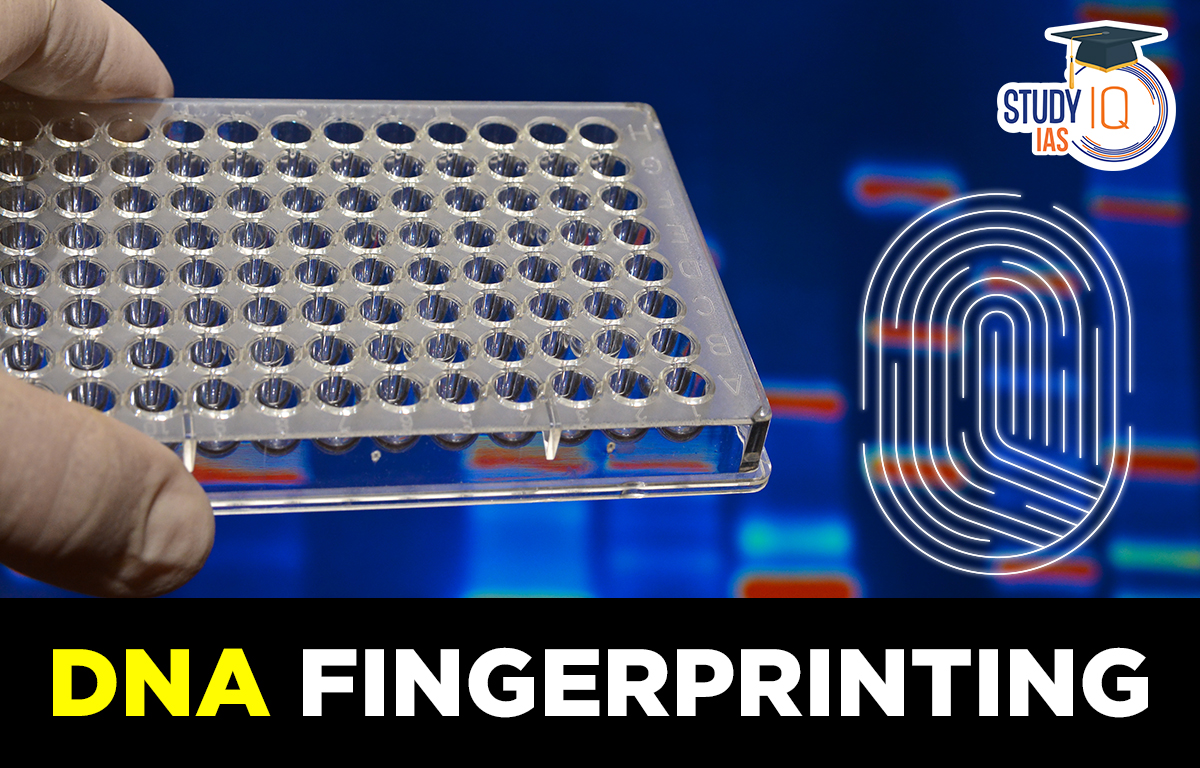Table of Contents
What is DNA Fingerprinting?
DNA Fingerprinting is method used to determine the probable identity of an individual based on the nucleotide sequences of certain regions of human DNA that are unique to individuals.
Principle: Although 99.9% of human DNA sequences are the same in every individual, enough of the DNA is different that can distinguish one person from another.
- DNA fingerprinting uses repetitive sequences called variable number tandem repeats (VNTRs), in particular short tandem repeats (STRs).
History of DNA Fingerprinting
DNA Fingerprinting Technique was developed in 1984 by Alec Jeffreys in the UK, after he discovered that DNA sequence for each person (except identical twins) was unique.
UK was able to obtain the world’s first conviction based on DNA evidence in the Lynda Mann rape and murder case.
DNA Fingerprinting was developed by in India?
Lalji Singh is known as the father of DNA fingerprinting in India. He developed DNA Fingerprinting for crime investigations at the Centre for Cellular and Molecular Biology (CCMB) in Hyderabad.
DNA fingerprinting was used for the first time in 1989 by the Kerala Police. From 2000s, the technology is used widely in rape cases where vaginal swab samples were matched with semen samples from suspects.
DNA Fingerprinting Steps
Sample collection: DNA material can be obtained from any bodily sample such as saliva, blood, skin, hair, saliva etc.
DNA extraction: DNA has to be extracted from the available sample based on restriction fragment length polymorphism (RFLP) technology.
Separation of sample: The DNA fragments are then separated by a technique called electrophoresis, based on their size. They are treated with chemicals to split DNA fragments into single strands.
Radioactive tagging: The separated fragments are then blotted onto synthetic membranes like nylon. The fragments undergo autoradiography and are exposed to x-ray film.
Analysing sample: The obtained pattern is then matched with that of the accused person to ascertain if they are same.

Challenges with DNA Fingerprinting
Preservation of sample: It has to be ensured that DNA of the investigators does not get mixed with that of the victims or the suspects.
- Proper care has to be taken to ensure samples are handled properly so as to obtain conviction.
Lack of training: All police department personnel do not have the expertise to handle DNA samples. It is necessary to provide proper training to all personnel.
Access to labs: Facilities required for DNA fingerprinting technique is available only at certain places in the country. This delays the whole investigation process.
Other Applications of DNA Fingerprinting
Paternity test: DNA fingerprinting can be used to establish relation between a parent and offspring. It can also establish familial ties.
Identifying genetic disorders: The technique can identify genetic disorders by analysing DNA samples.
Person identification: DNA samples can be analysed using DNA fingerprinting to establish identity of unknown person.


 World Population Day 2025, Themes, Histo...
World Population Day 2025, Themes, Histo...
 What are Polycyclic Aromatic Hydrocarbon...
What are Polycyclic Aromatic Hydrocarbon...
 Marlin Fish: Species, Features, Appearan...
Marlin Fish: Species, Features, Appearan...





















